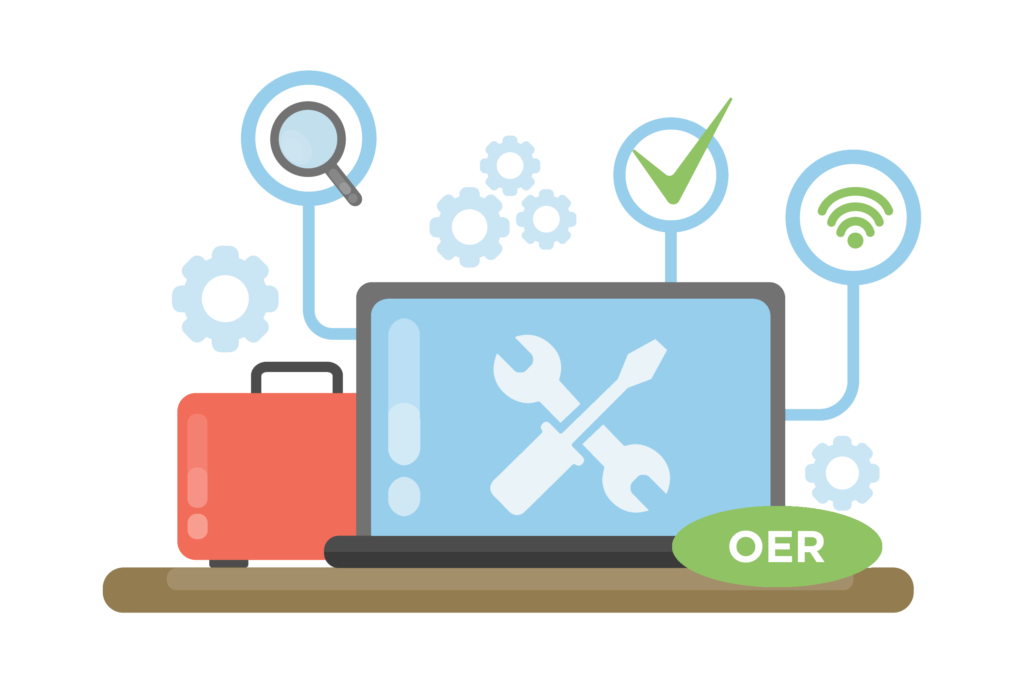
Few would argue that the past 18 months in the United States have not been tumultuous. Between the COVID-19 pandemic and continued racial injustices, individuals across the nation, but especially in higher education, are wrestling to define “a new normal.”
As higher education institutions transitioned to online or remote learning last year, student’s economic disparity became increasingly apparent. Some students often did not have access to class materials, high-speed internet connections, or reliable devices for their course work. From physical and psychological standpoints, students experienced food and housing insecurity, job losses, and increased mental health concerns (Lederer et al., 2020).
In response to these economic disparities, faculty can create more inclusive and equitable learning opportunities using open educational resources.
Strategies
-
- Use Open Educational Resources (OER) for course materials as opposed to costly textbooks. OERs “are teaching, learning, and research materials that re either (a) in the public domain or (b) licensed in a manner that provides everyone with free and perpetual permission to engage in the 5R activities(org). A recent study conducted over a 2.5-year period by Achieving the Dream’s OER Degree Initiative found students saved an average of $65 per course that used OERs. Some common OER repositories include MERLOT, OER Commons, and OpenStax.
- Implement authentic assessments, such as projects, case studies, or portfolios, that allow students to demonstrate their learning over time as opposed to using proctored online exams. Often, proctored online exams rely on special software that requires a webcam and stable, high-speed internet in order to monitor students while they complete an exam; whereas, authentic assessments can simulate application relevant to the workforce and enrich a student’s learning experiences.
- Make synchronous online sessions optional and make a recording of the session available afterward. A recording allows those who cannot attend an opportunity to benefit from the material that was covered and provides all students the ability to access the session for review purposes throughout a course.
- Provide links to campus resources for students including mental health and counseling centers, accessibility service offices, and campus food banks/pantries.
- Incorporate course materials from diverse perspectives and authors including individuals from traditionally underrepresented communities (e.g., BIPOC, AAPI, LGBTQIA+, etc.). Research suggests that a strong sense of belonging may improve learning experience and retention of students in online programs (Thomas et al., 2014). Having perspectives and voices reflected in course materials can provide students with that desired sense of belonging.
As Sam Cooke once sang, “a change is gonna come;” faculty and higher education institutions are uniquely positioned to embrace a new era of teaching and learning that fosters equity and inclusion and defines a more just “new normal” for generations to come.
References
- Achieving the Dream. (2020, March 5). OER at scale: The academic and economic outcomes of Achieving the Dream’s OER Degree Initiative. Retrieved June 8, 2021.
- Creative Commons. (n.d.). Open education. CreativeCommons.org. Retrieved June 8, 2021.
- Brookings Institution. (2021, March 16). How the COVID-19 pandemic has impacted higher education.
- Busteed, B. (2021, May 2). Pandemic-to-permanent: 11 lasting changes to higher education.
- Indiana University Center for Innovative Teaching and Learning. (n.d.) Authentic Assessment.
- Lederer, A. M., Hoban, M. T., Lipson, S. K., Zhou, S. Eisenberg, D. (2020). More than inconvenienced: The unique needs of U. S. college students during the COVID-19 pandemic. Health Education & Behavior, 48(1), 14-19.
- Thomas, L., Herbert, J. & Teras, M. (2014). A sense of belonging to enhance participation, success and retention in online programs. The International Journal of the First Year in Higher Education, 5(2), 69–80.

